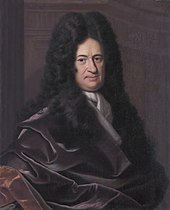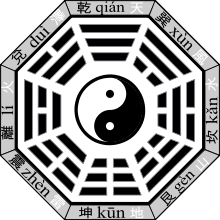Binary code

Abinary coderepresentstext,computer processor instructions,or any otherdatausing a two-symbol system. The two-symbol system used is often "0" and "1" from thebinary number system.The binary code assigns a pattern of binary digits, also known asbits,to each character, instruction, etc. For example, a binarystringof eight bits (which is also called a byte) can represent any of 256 possible values and can, therefore, represent a wide variety of different items.
In computing and telecommunications, binary codes are used for various methods ofencodingdata, such ascharacter strings,into bit strings. Those methods may use fixed-width orvariable-widthstrings. In a fixed-width binary code, each letter, digit, or other character is represented by a bit string of the same length; that bit string, interpreted as abinary number,is usually displayed in code tables inoctal,decimalorhexadecimalnotation. There are manycharacter setsand manycharacter encodingsfor them.
Abit string,interpreted as a binary number, can betranslated into a decimal number.For example, thelower casea,if represented by the bit string01100001(as it is in the standardASCIIcode), can also be represented as the decimal number "97".
History of binary codes
[edit]This section has multiple issues.Please helpimprove itor discuss these issues on thetalk page.(Learn how and when to remove these messages)
|

The modern binary number system, the basis for binary code, was invented byGottfried Leibnizin 1689 and appears in his articleExplication de l'Arithmétique Binaire.The full title is translated into English as the "Explanation of the binary arithmetic", which uses only the characters 1 and 0, with some remarks on its usefulness, and on the light it throws on the ancient Chinese figures ofFu Xi.[1]Leibniz's system uses 0 and 1, like the modern binary numeral system. Leibniz encountered theI Chingthrough French JesuitJoachim Bouvetand noted with fascination how itshexagramscorrespond to the binary numbers from 0 to 111111, and concluded that this mapping was evidence of major Chinese accomplishments in the sort of philosophical visual binarymathematicshe admired.[2][3]Leibniz saw the hexagrams as an affirmation of the universality of his own religious belief.[3]
Binary numerals were central to Leibniz's theology. He believed that binary numbers were symbolic of the Christian idea ofcreatio ex nihiloor creation out of nothing.[4]Leibniz was trying to find a system that converts logic verbal statements into a pure mathematical one[citation needed].After his ideas were ignored, he came across a classic Chinese text calledI Chingor 'Book of Changes', which used 64 hexagrams of six-bit visual binary code. The book had confirmed his theory that life could be simplified or reduced down to a series of straightforward propositions. He created a system consisting of rows of zeros and ones. During this time period, Leibniz had not yet found a use for this system.[5]
Binary systems predating Leibniz also existed in the ancient world. The aforementionedI Chingthat Leibniz encountered dates from the 9th century BC in China.[6]The binary system of theI Ching,a text for divination, is based on the duality ofyin and yang.[7]Slit drumswith binary tones are used to encode messages across Africa and Asia.[7]The Indian scholarPingala(around 5th–2nd centuries BC) developed a binary system for describingprosodyin hisChandashutram.[8][9]

The residents of the island ofMangarevainFrench Polynesiawere using a hybrid binary-decimalsystem before 1450.[10]In the 11th century, scholar and philosopherShao Yongdeveloped a method for arranging the hexagrams which corresponds, albeit unintentionally, to the sequence 0 to 63, as represented in binary, with yin as 0, yang as 1 and theleast significant biton top. The ordering is also thelexicographical orderonsextuplesof elements chosen from a two-element set.[11]
In 1605Francis Bacondiscussed a system whereby letters of the alphabet could be reduced to sequences of binary digits, which could then be encoded as scarcely visible variations in the font in any random text.[12]Importantly for the general theory of binary encoding, he added that this method could be used with any objects at all: "provided those objects be capable of a twofold difference only; as by Bells, by Trumpets, by Lights and Torches, by the report of Muskets, and any instruments of like nature".[12]
George Boolepublished a paper in 1847 called 'The Mathematical Analysis of Logic' that describes an algebraic system of logic, now known asBoolean algebra.Boole's system was based on binary, a yes-no, on-off approach that consisted of the three most basic operations: AND, OR, and NOT.[13]This system was not put into use until a graduate student fromMassachusetts Institute of Technology,Claude Shannon,noticed that the Boolean algebra he learned was similar to an electric circuit. In 1937, Shannon wrote his master's thesis,A Symbolic Analysis of Relay and Switching Circuits,which implemented his findings. Shannon's thesis became a starting point for the use of the binary code in practical applications such as computers, electric circuits, and more.[14]
Other forms of binary code
[edit]This sectionpossibly containsoriginal research.(March 2015) |

The bit string is not the only type of binary code: in fact, a binary system in general, is any system that allows only two choices such as a switch in an electronic system or a simple true or false test.
Braille
[edit]Brailleis a type of binary code that is widely used by the blind to read and write by touch, named for its creator, Louis Braille. This system consists of grids of six dots each, three per column, in which each dot has two states: raised or not raised. The different combinations of raised and flattened dots are capable of representing all letters, numbers, and punctuation signs.
Bagua
[edit]Thebaguaare diagrams used infeng shui,TaoistcosmologyandI Chingstudies. Theba guaconsists of 8 trigrams;bāmeaning 8 andguàmeaning divination figure. The same word is used for the 64 guà (hexagrams). Each figure combines three lines (yáo) that are either broken (yin) or unbroken (yang). The relationships between the trigrams are represented in two arrangements, the primordial, "Earlier Heaven" or "Fuxi"bagua,and the manifested, "Later Heaven", or "King Wen"bagua.[15](See also, theKing Wen sequenceof the 64 hexagrams).
Ifá, Ilm Al-Raml and Geomancy
[edit]TheIfá/Ifé system of divination in African religions, such as ofYoruba,Igbo,andEwe,consists of an elaborate traditional ceremony producing 256 oracles made up by 16 symbols with 256 = 16 x 16. An initiated priest, orBabalawo,who had memorized oracles, would request sacrifice from consulting clients and make prayers. Then, divination nuts or a pair of chains are used to produce random binary numbers,[16]which are drawn with sandy material on an "Opun" figured wooden tray representing the totality of fate.
Through the spread ofIslamicculture, Ifé/Ifá was assimilated as the "Science of Sand" (ilm al-raml), which then spread further and became "Science of Reading the Signs on the Ground" (Geomancy) in Europe.
This was thought to be another possible route from which computer science was inspired,[17]as Geomancy arrived at Europe at an earlier stage (about 12th Century, described byHugh of Santalla) thanI Ching(17th Century, described byGottfried Wilhelm Leibniz).
Coding systems
[edit]
ASCII code
[edit]TheAmerican Standard Code for Information Interchange(ASCII), uses a 7-bit binary code to represent text and other characters within computers, communications equipment, and other devices. Each letter or symbol is assigned a number from 0 to 127. For example, lowercase "a" is represented by1100001as a bit string (which is "97" in decimal).
Binary-coded decimal
[edit]Binary-coded decimal(BCD) is a binary encoded representation of integer values that uses a 4-bitnibbleto encode decimal digits. Four binary bits can encode up to 16 distinct values; but, in BCD-encoded numbers, only ten values in each nibble are legal, and encode the decimal digits zero, through nine. The remaining six values are illegal and may cause either a machine exception or unspecified behavior, depending on the computer implementation of BCD arithmetic.
BCD arithmetic is sometimes preferred to floating-point numeric formats in commercial and financial applications where the complex rounding behaviors of floating-point numbers is inappropriate.[18]
Early uses of binary codes
[edit]- 1875:Émile Baudot"Addition of binary strings in his ciphering system," which, eventually, led to the ASCII of today.
- 1884: TheLinotype machinewhere the matrices are sorted to their corresponding channels after use by a binary-coded slide rail.
- 1932:C. E. Wynn-Williams"Scale of Two" counter[19]
- 1937:Alan Turingelectro-mechanical binary multiplier
- 1937:George Stibitz"excess three" codein theComplex Computer[19]
- 1937:Atanasoff–Berry Computer[19]
- 1938:Konrad ZuseZ1
Current uses of binary
[edit]Most modern computers use binary encoding for instructions and data.CDs,DVDs,andBlu-ray Discsrepresent sound and video digitally in binary form. Telephone calls are carried digitally on long-distance and mobile phone networks usingpulse-code modulation,and onvoice over IPnetworks.
Weight of binary codes
[edit]The weight of a binary code, as defined in the table ofconstant-weight codes,[20]is theHamming weightof the binary words coding for the represented words or sequences.
See also
[edit]References
[edit]- ^Leibniz G., Explication de l'Arithmétique Binaire, Die Mathematische Schriften, ed. C. Gerhardt, Berlin 1879, vol.7, p.223; Engl. transl.[1]
- ^Aiton, Eric J. (1985).Leibniz: A Biography.Taylor & Francis. pp. 245–8.ISBN978-0-85274-470-3.
- ^abJ.E.H. Smith (2008).Leibniz: What Kind of Rationalist?: What Kind of Rationalist?.Springer. p. 415.ISBN978-1-4020-8668-7.
- ^Yuen-Ting Lai (1998).Leibniz, Mysticism and Religion.Springer. pp. 149–150.ISBN978-0-7923-5223-5.
- ^"Gottfried Wilhelm Leibniz (1646 - 1716)".www.kerryr.net.
- ^Edward Hacker; Steve Moore; Lorraine Patsco (2002).I Ching: An Annotated Bibliography.Routledge. p. 13.ISBN978-0-415-93969-0.
- ^abJonathan Shectman (2003).Groundbreaking Scientific Experiments, Inventions, and Discoveries of the 18th Century.Greenwood Publishing. p. 29.ISBN978-0-313-32015-6.
- ^Sanchez, Julio; Canton, Maria P. (2007).Microcontroller programming: the microchip PIC.Boca Raton, Florida: CRC Press. p. 37.ISBN978-0-8493-7189-9.
- ^W. S. Anglin and J. Lambek,The Heritage of Thales,Springer, 1995,ISBN0-387-94544-X
- ^Bender, Andrea; Beller, Sieghard (16 December 2013)."Mangarevan invention of binary steps for easier calculation".Proceedings of the National Academy of Sciences.111(4): 1322–1327.doi:10.1073/pnas.1309160110.PMC3910603.PMID24344278.
- ^Ryan, James A. (January 1996). "Leibniz' Binary System and Shao Yong's" Yijing "".Philosophy East and West.46(1): 59–90.doi:10.2307/1399337.JSTOR1399337.
- ^abBacon, Francis(1605)."The Advancement of Learning".London. pp. Chapter 1.
- ^"What's So Logical About Boolean Algebra?".www.kerryr.net.
- ^"Claude Shannon (1916 - 2001)".www.kerryr.net.
- ^Wilhelm, Richard(1950).The I Ching or Book of Changes.trans. byCary F. Baynes,foreword byC. G. Jung,preface to 3rd ed. byHellmut Wilhelm(1967). Princeton, NJ: Princeton University Press. pp. 266, 269.ISBN978-0-691-09750-3.
- ^Olupona, Jacob K. (2014).African Religions: A Very Short Introduction.Oxford:Oxford University Press.p. 45.ISBN978-0-19-979058-6.OCLC839396781.
- ^Eglash, Ron (June 2007)."The fractals at the heart of African designs".www.ted.com.Archivedfrom the original on 2021-07-27.Retrieved2021-04-15.
- ^Cowlishaw, Mike F.(2015) [1981, 2008]."General Decimal Arithmetic".IBM.Retrieved2016-01-02.
- ^abcGlaser 1971
- ^Table of Constant Weight Binary Codes
External links
[edit]- Sir Francis Bacon's BiLiteral Cypher systemArchived2016-09-23 at theWayback Machine,predates binary number system.
- Weisstein, Eric W."Error-Correcting Code".MathWorld.
- Table of general binary codes.An updated version of the tables of bounds for small general binary codes given inM.R. Best; A.E. Brouwer; F.J. MacWilliams; A.M. Odlyzko; N.J.A. Sloane (1978), "Bounds for Binary Codes of Length Less than 25",IEEE Trans. Inf. Theory,24:81–93,CiteSeerX10.1.1.391.9930,doi:10.1109/tit.1978.1055827.
- Table of Nonlinear Binary Codes.Maintained by Simon Litsyn, E. M. Rains, and N. J. A. Sloane. Updated until 1999.
- Glaser, Anton (1971). "Chapter VII Applications to Computers".History of Binary and other Nondecimal Numeration.Tomash.ISBN978-0-938228-00-4.cites some pre-ENIAC milestones.
- First book in the world fully written in binary code:(IT) Luigi Usai,01010011 01100101 01100111 01110010 01100101 01110100 01101001,Independently published, 2023, ISBN 979-8-8604-3980-1.URL consulted September 8, 2023.
